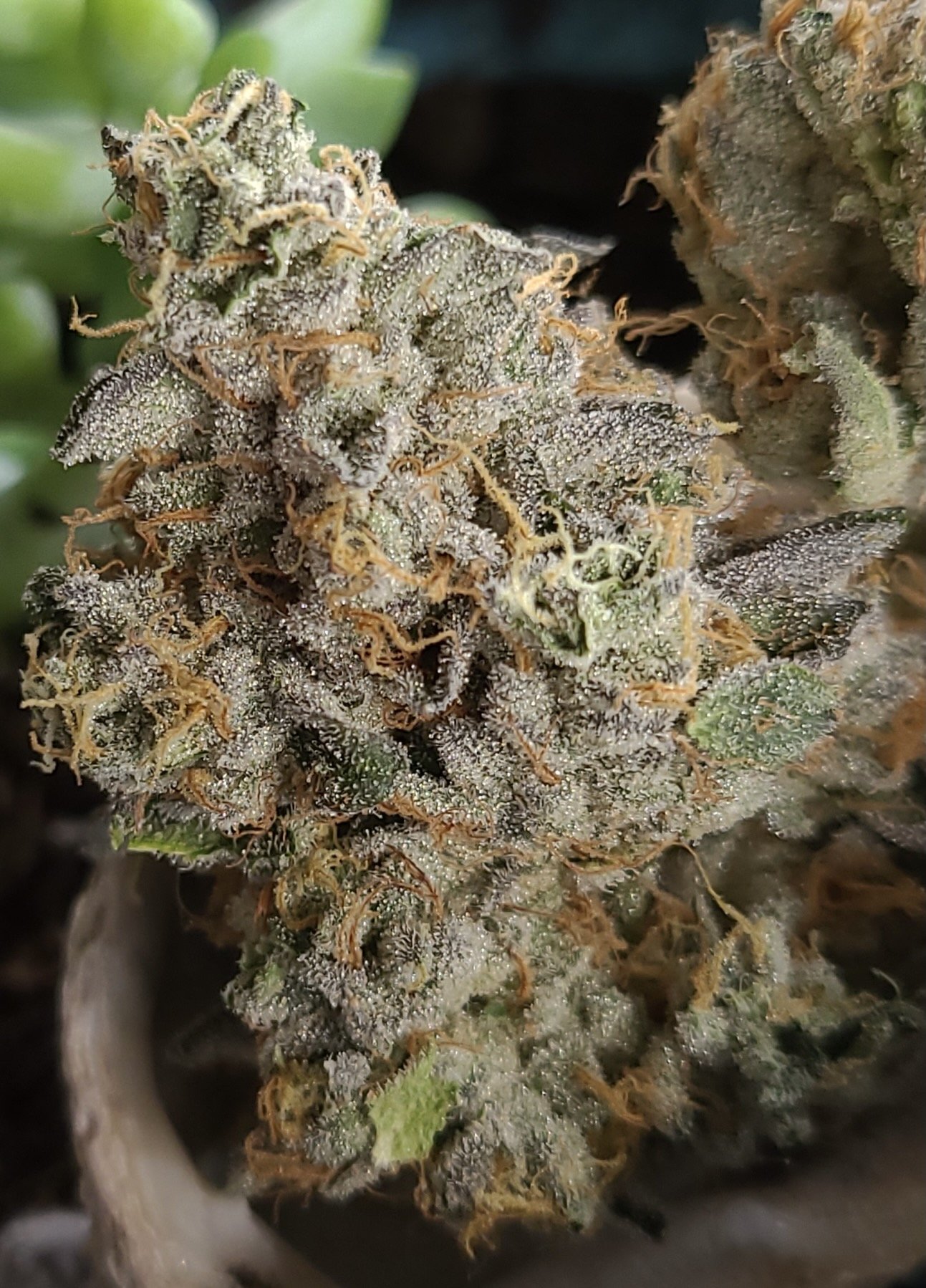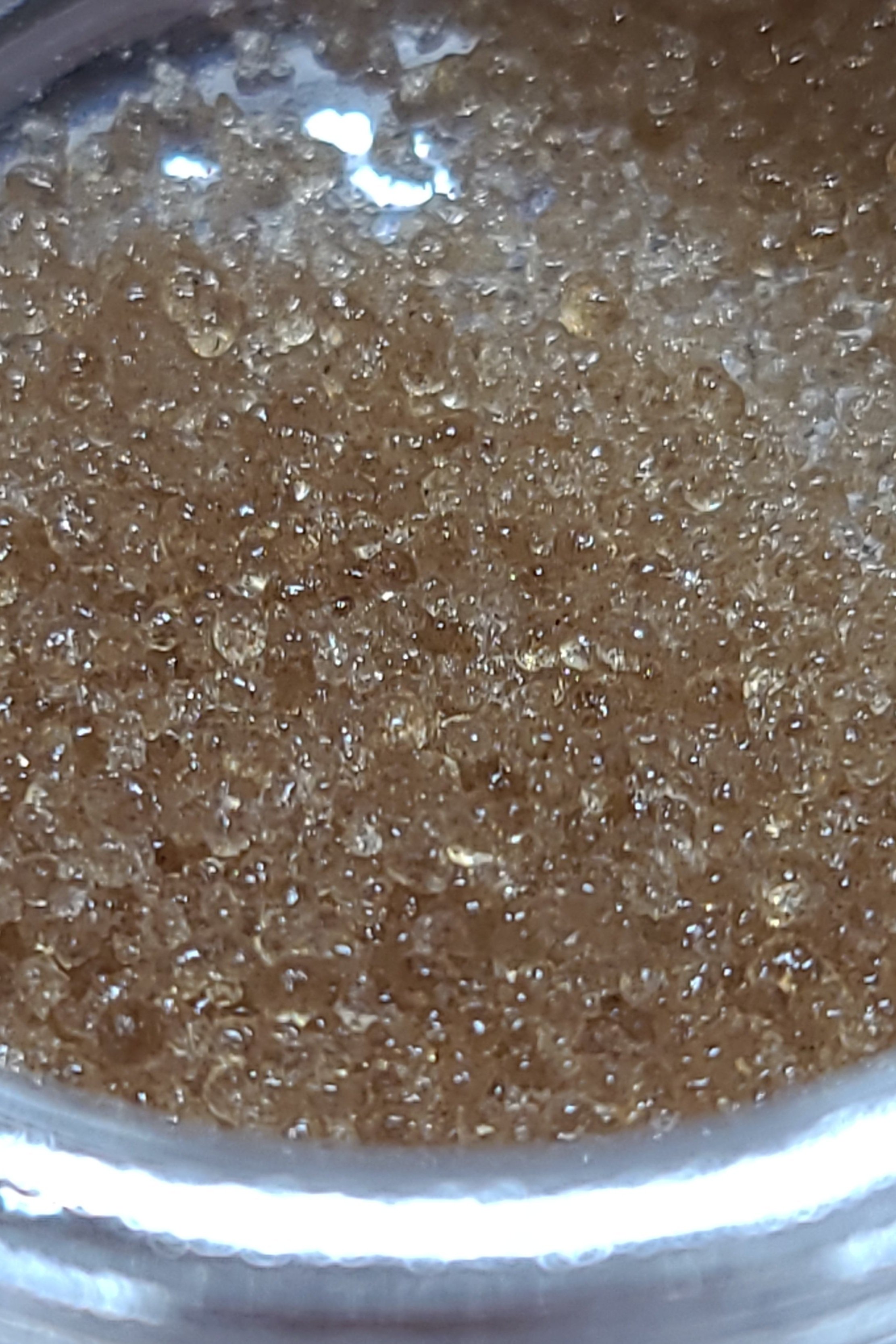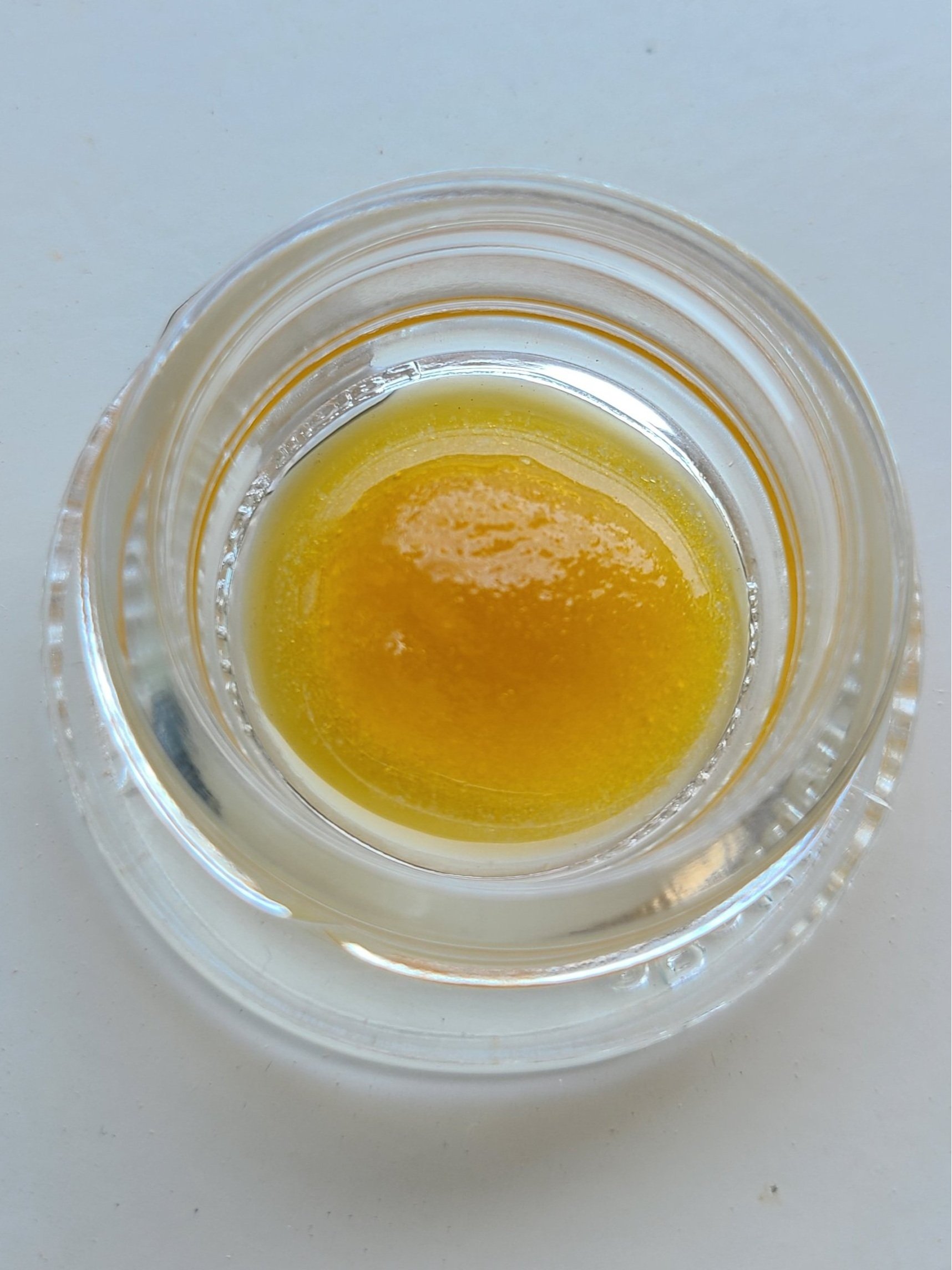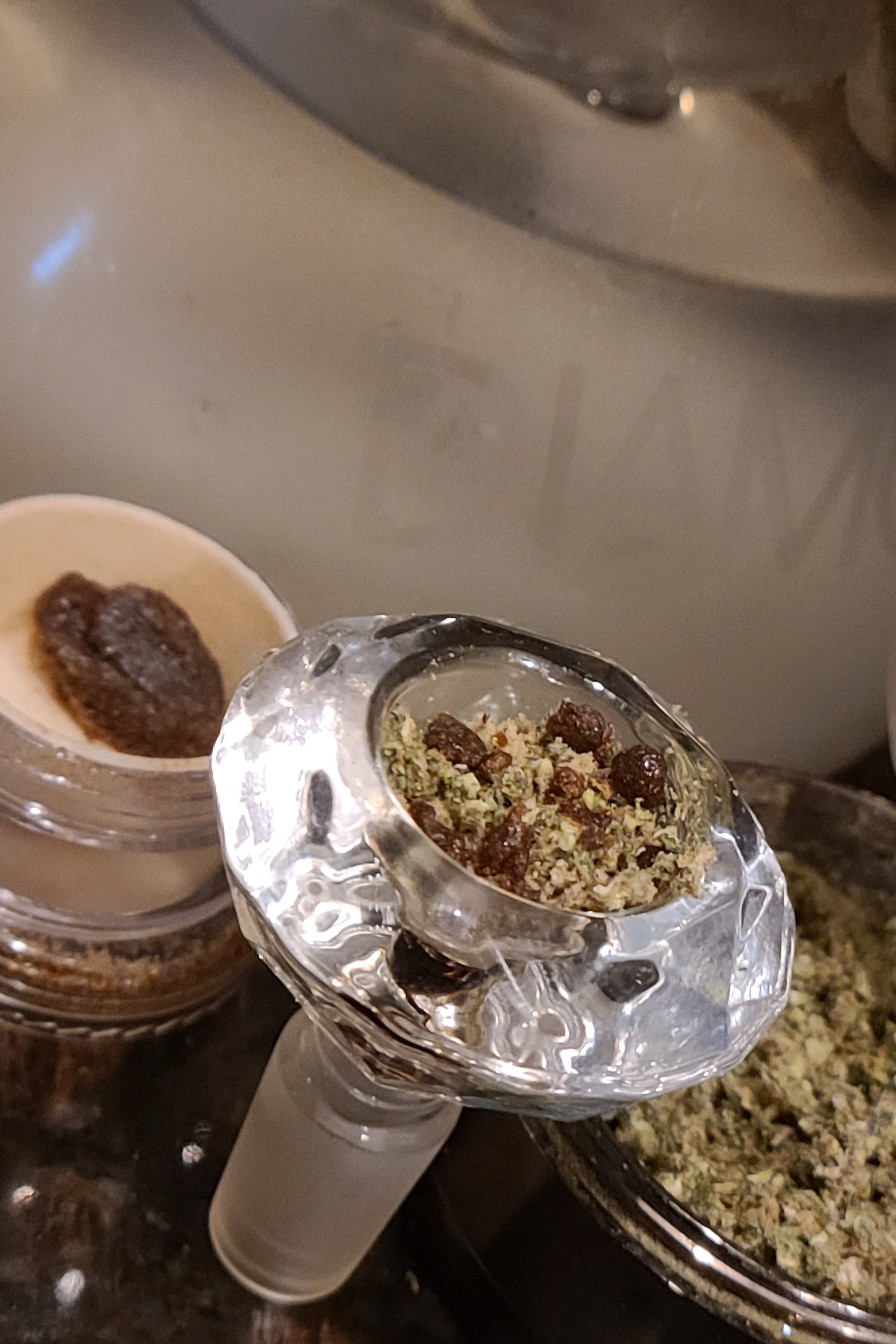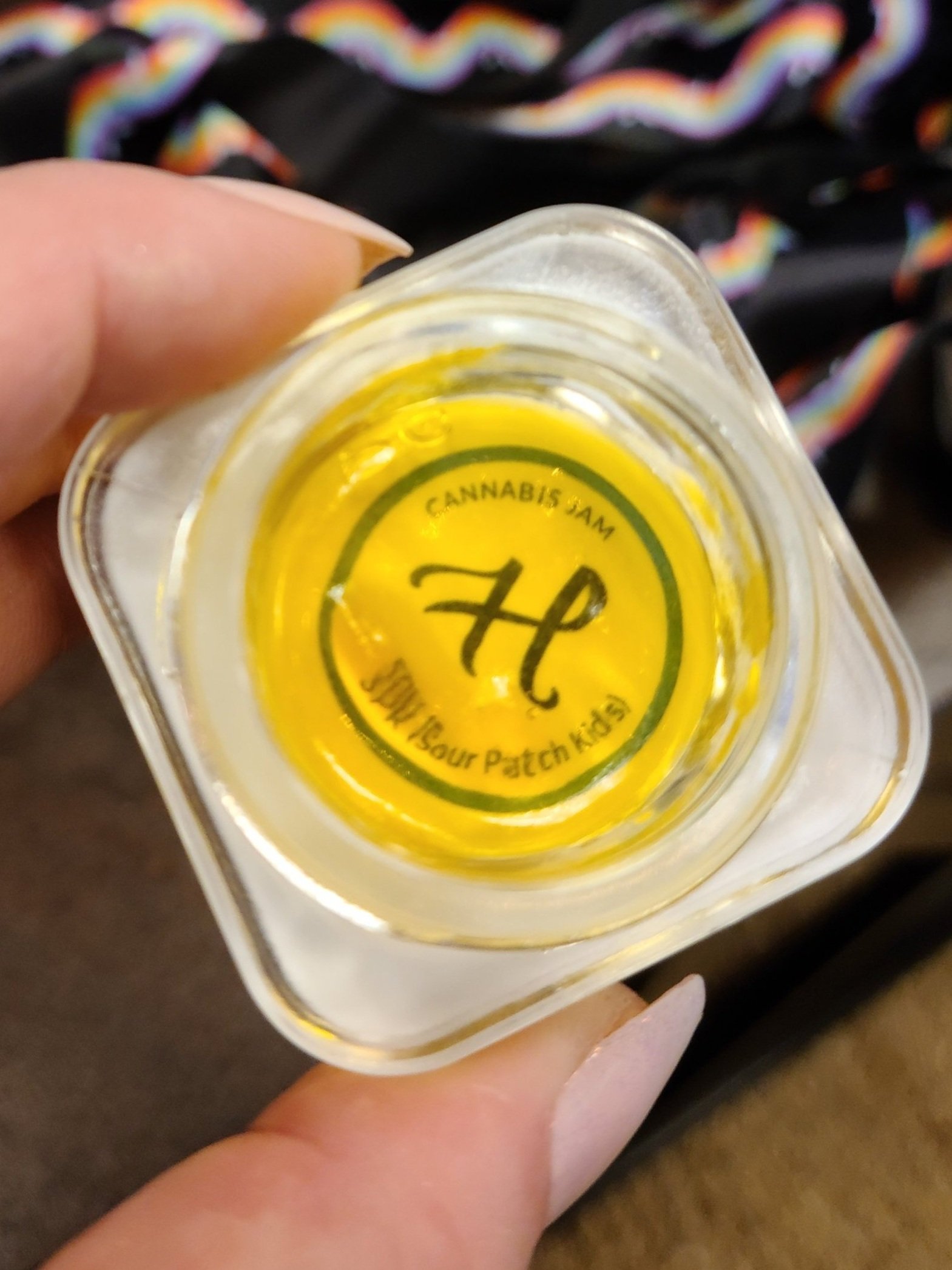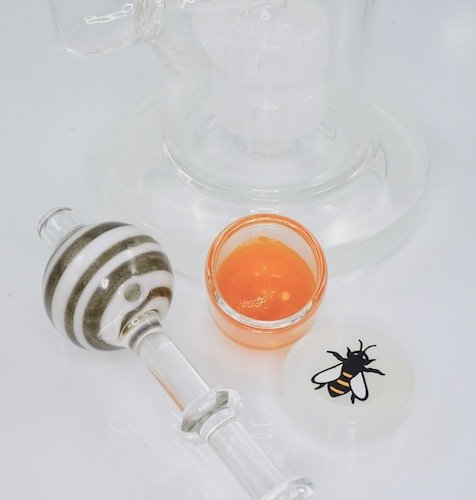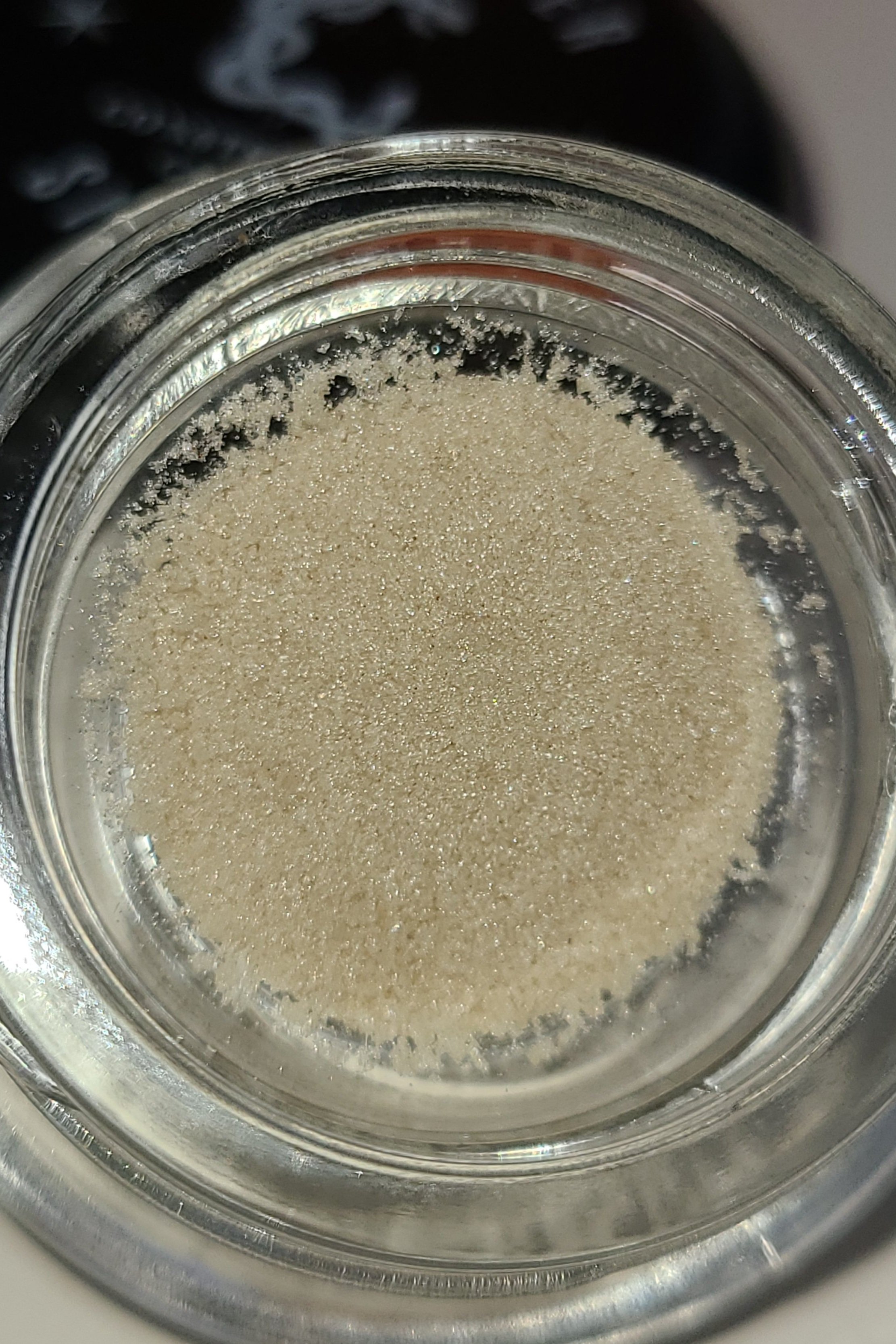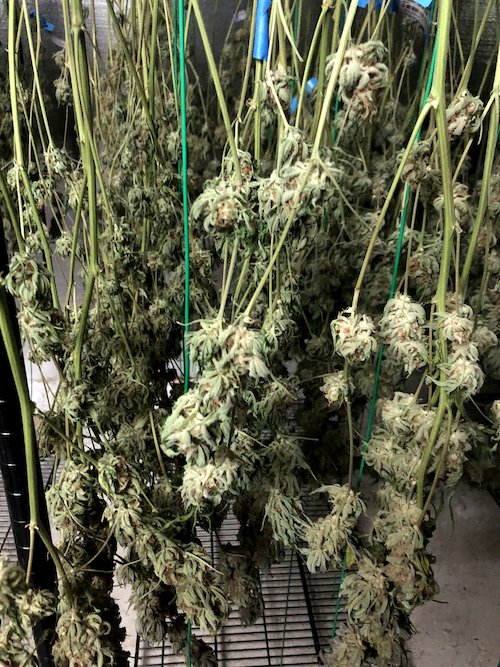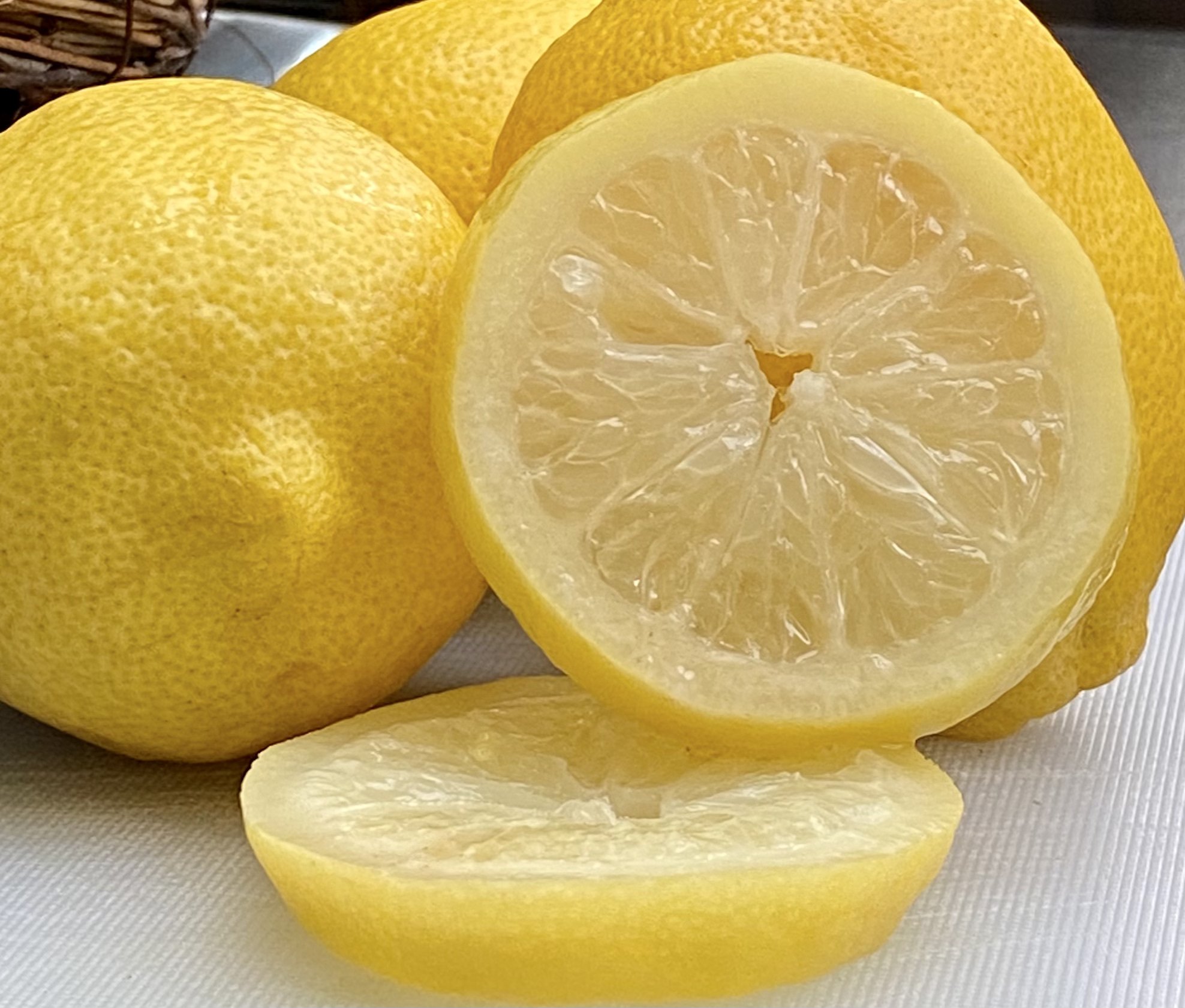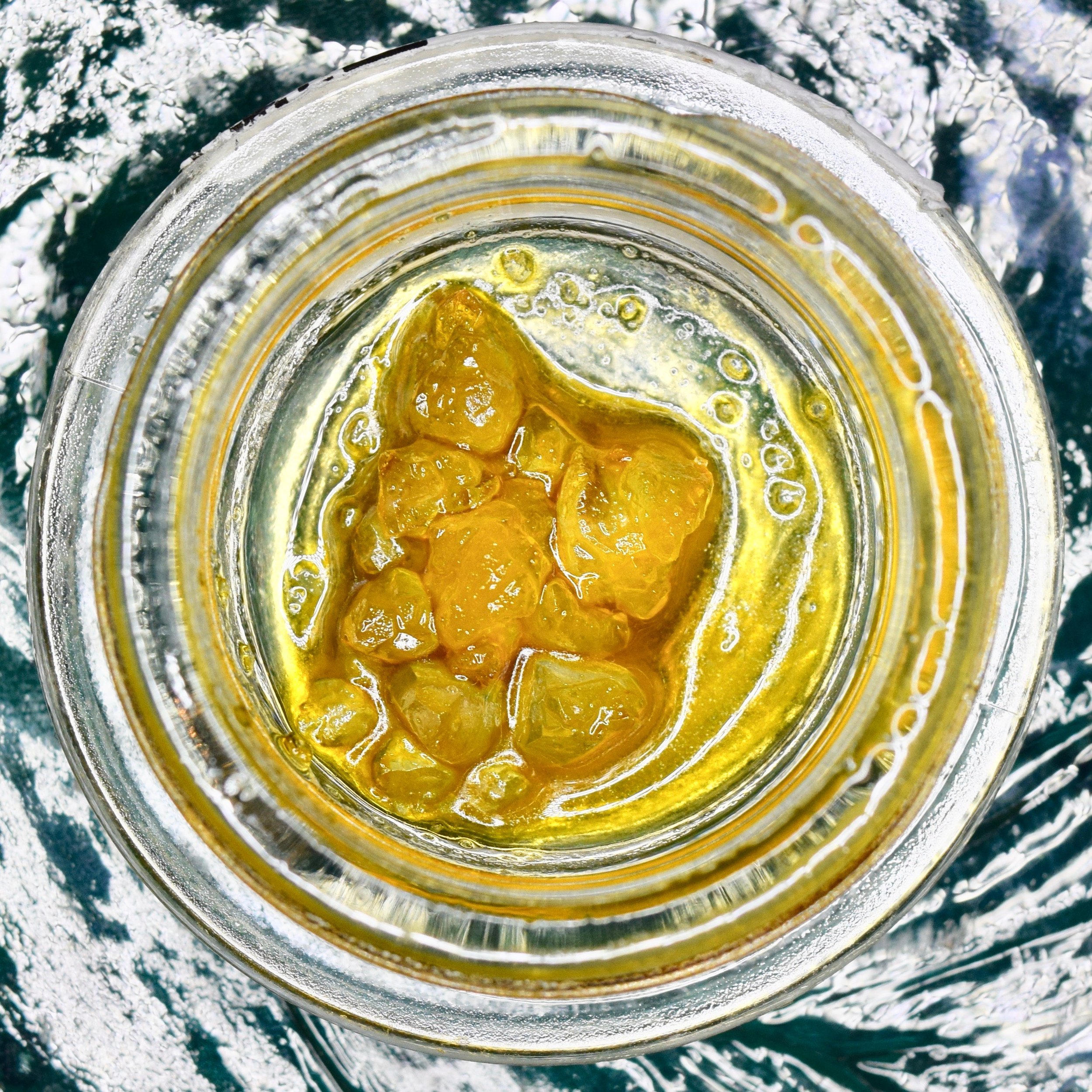Terpenes 101- Limonene
by Rachel Hantula, customer & product manager
Introduction to terpenes:
What are they?
Terpenes are aromatic compounds found in all plants. Some terpenes are thought to play a protective role in the plant. Many believe they evolved to act as a natural deterrent to pests. Terpenes are very commonly associated with the cannabis plant, specifically, due to its tendency to produce naturally occurring high concentrations of these compounds.
A plant’s specific terpene profile will dictate its general fragrance and flavor. These compounds typically exist as oils at room temperature and are contained within the resin glands found on the cannabis plant (aka trichome heads, that sparkly sticky icky good good).
Showcasing trichomes: Notice the thoroughly frosted flower has plenty of trichome heads gleaming in the light. The picture on the right is pure, unadulterated trichome heads, mechanically separated from flower via ice water extraction. These glands contain all the yummy terpenes!
Have you ever opened a jar and got slapped in the face with some odorous, sour, funky skunk? Those are terpenes. They have evaporated from their oil form into a gaseous state and wafted right on up to your nostrils.
Many folks follow their nose when determining which cannabis strains they’d like to indulge in, which in my opinion, is one true and tried strategy for finding a cultivar that pairs well with what you’re looking for and enjoy.
Cannabis extracts will typically have higher concentrations of terpenes than their flower counterparts in the same way they are also typically more concentrated in cannabinoids. Extraction aims to pull all the juicy goodies we want from the plant and leave as much plant matter behind as possible. Look at all these terpy babies!
Why do they matter?
Throughout my years of budtending, I’ve met many individuals who have expressed they do not have any preference for smell or flavor when it comes to their cannabis. That’s totally okay! You’re not picky, which I never see as a problem.
However, the terpene profile responsible for those physical characteristics have been thought to play a critical role in how consuming any specific cannabis cultivar affects any individual.
I personally find that I am more attracted to strains with terpene profiles that are a bit on the foul, stanky side. I wholeheartedly believe my brain signals to me to ENJOY and CRAVE these typically unenjoyable odors because of the way and how well my specific and unique body chemistry has responded to these types of terpene profiles.
They typically produce my favorite type of high experience and leave my mouth watering at their stinky, offensive, armpit essences. So, if you aren’t very particular about the smell and flavor of your cannabis, you might consider giving it some thought and paying a bit of closer attention to how you initially react upon smelling a strain of cannabis and how much you end up enjoying said strain.
There is still a great deal of research to be done when it comes to understanding just how this occurs to what degree they engage (directly or indirectly) with our endocannabinoid system (our biological pathway in which phytocannabinoids like THC and CBD interact). It is generally believed that most terpenes interact indirectly--they don’t bind directly with any of our endocannabinoid receptors (with one very special exception which we will cover in a later blog post).
The combination of terpenes, cannabinoids and various other compounds found within cannabis plants are thought to work together to ultimately produce what we in the industry refer to as the entourage effect. The synergistic interaction between these different organic compounds has been shown to have a significant impact on the action of any single cannabinoid.
Additionally, because terpenes produce vibrant smells, they form the basis of many essential oils and are an integral part of many alternative therapies, such as aromatherapy. Inhaling the scents from some plants and essential oils may affect a person’s mood and stress levels. In the same capacity, consuming these essential oils through smoking or vaporization can also affect us physiologically!
Cannabis flower hanging to cure (dry). This is a very important step in cannabis cultivation. An improper cure can absolutely have a negative impact on the final product’s terpene profile due to the volatile nature of these compounds.
Read more on the Entourage Effect from Dr. Ethan Russo, the board-certified neurologist, psychopharmacology researcher who coined the term here. You can also check out another blog post that explores the Entourage Effect here.
Now that we’re familiar with terpenes in general- let’s get a little more specific!
Introducing…. Limonene!
Limonene is the second most abundant terpene found in cannabis, so if you smoke plenty of weed, you’re likely familiar! Lemons, oranges and other citrus fruits contain large amounts of this specific terpene. Limonene is also found in many other plants like mint, juniper, rosemary and pine needles.
Terpenes are considered “volatile”. Sounds scary, but it really just means it easily evaporates from its oil state in this context. Limonene is particularly volatile and evaporates very quickly.
The volatility of this compound makes it quick to hit the noses of any potential predators or parasites. Many animals will perceive the smell of limonene as a toxin. Many of the “smartest” plants have adapted this evolutionary advantage through the production of limonene.
Pure THCA crystals soaked in a puddle of oily terpenes. This is a great visual example to show what terpenes look like and their typical consistency at room temperature. If that jar was left open for an extended period of time, the volatile terpenes could evaporate leaving behind only the isolated THCA crystals.
Although limonene is found abundantly in cannabis, this doesn’t mean all varieties and strains will smell like lemon. One of Limonene’s chemical forms can smell mostly like tangerine, while another form smells like lemon, and the other tastes like grapefruit. The combination of other terpenes in addition to limonene will also have an effect on smell and flavor.
How do strains high in Limonene affect my high/experience?
The effects associated with any specific cannabis strain will differ depending on the entire makeup of its terpene and cannabinoid profile, but there are some general themes that have been observed with Limonene.
Limonene typically produces mood-elevating effects, promoting stress-relief and a feeling of enhanced focus. Strains high in limonene are often assumed to be sativa or sativa-leaning hybrids. This is not always the case. We have the perfect example…
Sky High Garden’s Pineapple Chunk!
Sky High Garden’s Pineapple Chunk is a cross of Barney’s Pineapple and Skunk. Citrus, skunk and cheese come together to occupy your sense of smell and amazement of this exotic cultivar. Pineapple Chunk offers an industry-leading terpene profile that is distinctive from first taste. Limonene is very prominent in Pineapple Chunk’s terpene profile, although this strain is considered to be on the indica-leaning side.
Limonene still provides some stellar uplifting, mood enhancing effects in this cultivar. The presence of this terpene prevents it from really melting and weighing you down into the couch completely. Pineapple Chunk’s terpene profile will get you feeling warm, cozy, ready to chill with a goofy grin plastered on. It has long been a staple on Hashtag’s shelves, and our guests are OBSESSED.
Other notable limonene dominant strains, according to Leafly:
Banana OG
Berry White
Black Cherry Soda
Cinex
Do-Si-Dos
MAC
Purple Hindu Kush
Quantum Kush
Strawberry Banana
Tahoe OG
Wedding Cake
White Fire OG
Remember, the WHOLE terpene profile (in addition to its cannabinoid profile) paints the best picture for how a strain will smell, taste and affect you. We’ll continue on with this next month and discuss more terpenes, their characteristics, and how they play a greater role in affecting our high.


